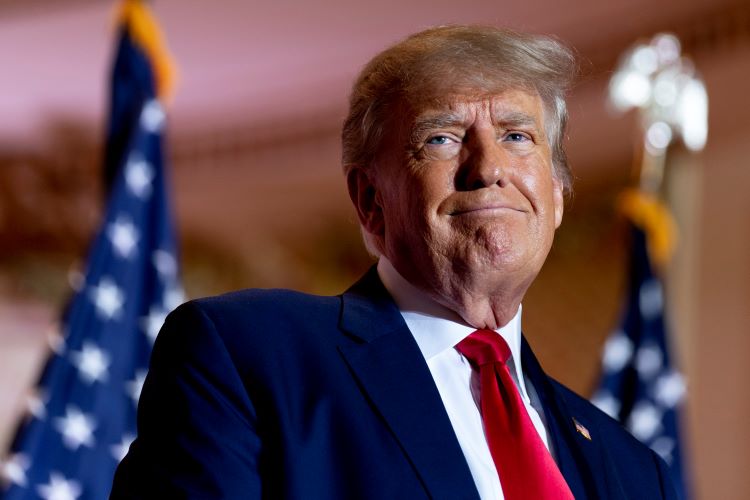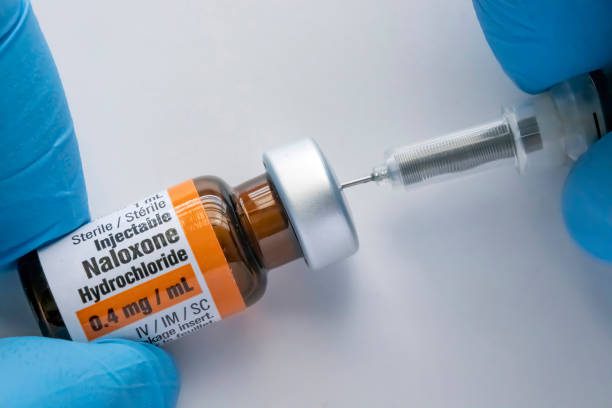4 Years into the COVID-19 Pandemic: Where We Stand
By Jennifer S. Bard
The White House is preparing to shut down their COVID Task Force this May, in conjunction with ending the public health emergency — the latest in a series of astounding and shortsighted decisions that put individual Americans at as great a risk from serious harm as a result of catching COVID-19 as at any stage in the pandemic.
By declaring the pandemic over by fiat, the government is giving up the fight when they should be redoubling their efforts. Not only is COVID still very much with us, but all existing methods of preventing infection have either been severely weakened by the virus’ mutations, or simply abandoned. Additionally, more is known of the harm COVID causes past the initial infection.
There is nothing vague or subtle about the “end” of a disease outbreak. Either cases actually disappear, as with seasonal influenza, or they are dramatically reduced through a vaccine that prevents further transmission, as happened with measles and polio. Neither event has happened here. Instead, like HIV, which continues to be an ongoing public health emergency, the virus continues to infect and mutate.
Death from COVID remains an ongoing and serious risk. In the United States alone, death rates have consistently surged and then plateaued without ever descending back to normal. Moreover, even if death rates from initial infection are stabilizing due to knowledge gained about early warning signs of severe COVID and the continued (but potentially muted) effectiveness of the few available antivirals, COVID is now causing deaths from heart and brain damage six months or a year later.
It should be the volume of infection that cause the most concern. As we enter the fourth year of the pandemic, the rate of infections and reinfections are increasingly ominous, because, even if not resulting in death, each infection creates a new opportunity for serious long-term organ damage.
Apologists for the administration may well argue that the devastating consequences of letting the virus spread unchecked are due more to a series of exceptionally unlucky breaks concerning characteristics of the virus itself. And that is certainly a contributing factor. Rather than becoming less virulent or transmissible, at every stage, the virus has tended to mutate in the opposite direction.
Further, it is now likely that, like many viruses, COVID frequently damages its victims’ immune systems enough to make them more susceptible to infections that they might otherwise have fought off. While not an immune system “failure,” and perhaps, if we are lucky, not permanent, the depletion is substantial enough for people to remain vulnerable to reinfection with COVID or a range of other opportunistic diseases.
These reinfections, moreover, often lead to a more serious course of disease and about the same likelihood of organ damage left behind once the victim is no longer actively contagious. Maybe worst of all, because of the general rollback of protections that had been shielding children, such as isolation (initially) and then masking, they too became infected. And unlike what now appears not so much wishful thinking as magical thinking, it turned out they were not naturally immune from either infection, serious illness, death, or long-lasting after-effects. As the years since the change in policy went on, more and more of these children also became infected repeatedly.
For all of this, I blame the White House, which has used the U.S. Centers of Disease Control and Prevention (CDC) to minimize the threat and sabotage efforts to combat it. This started early in the current President’s administration, by encouraging the CDC to change how it tracked and reported cases. Initially, the CDC posted a map tracking the number of cases of COVID in each county for the purpose of advising people of their risk of being infected. In this framework, the CDC was treating cases of the virus like angry bees. The more bees present in a confined area, the greater the risk of being infected.
For reasons known only to themselves, but right before the State of the Union, the CDC, without much warning or explanation, changed its goals. Instead of tracking cases to determine the risk of any individual being infected, they started to track hospital capacity. Essentially, they prioritized the ability to hospitalize patients very sick from COVID over preventing initial infections.
But, by keeping the same map format and continuing to link threat levels to colors on the map, they created a system with no cues to individuals or institutions when a rising number of cases warranted further precautionary measures.
Overnight, this new map, now in soothing pastel yellows and greens, rather than the increasingly darker pigments of red and orange, pulled the rug out under both institutional and individual measures to prevent infection. In terms of deception, it was the equivalent of the national weather service quietly reversing its hurricane rating system so that 5 was the least dangerous and 1 the most.
Unfortunately, changing the map did nothing to change the reality that each week thousands of people continued to die within 28 days of contracting COVID, and many millions more were not just infected, but re-infected. This is because although the virus has mutated enough to make many of the existing vaccines and treatments ineffective, it has never mutated into a form less likely to wreak havoc in the human body. Retrospective studies show that at least as many people died during the many iterations of the Omicron wave than in the supposedly deadlier Delta wave.
If all that wasn’t enough, the CDC again without warning or scientific support, but under documented pressure from the airline industry, unilaterally cut in half the amount of time a person infected with COVID had to stay in self-isolation, from ten days to five.
Another unlucky break is that the virus has retained or increased its ability to infect humans with every mutation. Already five times more contagious than most strains of influenza, by many estimates it may be twice that. This rapid mutation means that neither the original vaccines nor the re-engineered booster, which never conferred complete immunity, provide only short-lasting, partial protection against either infection or severe illness. Even worse, what had been very protective antibody treatments that could be given to the most vulnerable patients, such as those going through chemotherapy, in advance of infection were rendered completely ineffective and had to be withdrawn from the market as the virus mutated. This has also happened to post-infection drugs intended to fight off the virus, with many of the most promising also being withdrawn as useless.
The growing understanding that vaccines are doing a very poor job at preventing either initial cases or reinfections has emboldened those who subscribe to a long discounted fringe view that the best protection from future cases of the virus was not a vaccine, but the virus itself. There are no viruses for which this an appropriate course of action, and deliberate mass infection has never been recommended for any disease outbreak since the discovery of germs, and rarely before then. People did not run out to catch the Black Death.
This policy of deliberate infection, which misappropriated the label for calculating what percentage of a population had to be vaccinated to stop the spread of smallpox, herd immunity, is particularly dangerous because, in another unlucky break, initial infection with COVID provides little, if any, immunity from reinfection.
Worse, the risk of death and permanent organ damage among the unvaccinated is far greater than any associated with the receiving vaccine. In clear terms, it is many times more likely that a person infected with COVID will experience heart damage from the virus than the vaccine. The best protection against COVID is to not catch it all.
But here’s the first lucky break. It turns out the in the face of a global pandemic, something unprecedented happened: physical and biological scientists worked together on the same problem. What they discovered, using sophisticated equipment that measured air flow, was that old theories about viral infection were wrong in general, and in respect to COVID very wrong.
Rather than travelling short distances attached to mucus and saliva expelled by infected hosts that then splashed onto nearby victims, the virus could attach to particles so small that they floated in the air like dust motes, dandelion seeds, and, most relevantly, cigarette smoke. That meant COVID could infect people across long distances making any previous “safety zone” of six feet irrelevant.
Maybe worse, because the particles in which the virus embeds are so small, they can be launched into the air through normal breathing, speaking, or singing — not just the tell-tale coughs and sneezes of an infected person who is visibly or audibly sick.
And worst of all, not only can the virus hover in empty rooms and travel long distances on air currents (indoors or out), it retains its infectious abilities not for hours, as first thought, but perhaps an entire day.
Yet with knowledge came solutions. Scientists specializing in physics and mechanical engineering were able to construct experiments showing that the HEPA filters already in common use to filter air in industrial settings could trap particles leaving an infected person and, just as they did for the thousands of painters and plasterers who use them every day, prevent particles from entering the nose and mouth of their next victims. Even better, these filters were even more effective when combined with ordinary home air filtration devices, or constructed into homemade air cleaners using a box fan, masking tape, and HEPA filters; they could reduce the number of virus carrying particles even more efficiently by first sucking them in and then trapping them. In a room full of bees, they were a net or a vacuum hose.
Also, these physical scientists discovered that another less familiar but also readily available device, a UV lamp, could quickly neutralize virus particles, rendering them inert by the time they reached a potential host.
Unfortunately, the Biden administration’s irresponsible denial and minimization of the virus’ presence and continued threat has pulled the rug out from under both individual and collective efforts to deploy these available, cheap, and nonintrusive mechanical protection devices. This is both because there is no pressure on Congress to allocate the funds needed to install this equipment, but also because individuals themselves are reluctant to appear foolish. The now almost entirely Easter Egg green CDC maps make people advocating for cleaner air look and feel like they are advocating for tinfoil hats. Even individuals who could protect themselves in spaces they control are unlikely to do so in the face of government advice indistinguishable from propaganda.
Whether or not the government is directly behind media efforts to portray those seeking greater protection as mentally ill or afraid to move on from past threats, and there is some evidence they are, their inaction supports a narrative that everyone wants to hear: the danger is past.
And, as bad as things are, they are about to get worse. Even when CDC adopted the “room at the ICU map” they still collected case data and made it available (albeit in a much harder to find and substantially desaturated map). That is likely to stop soon. According to CDC’s own director, once the administration allows the COVID public health emergency to expire in May of this year, states will not be obligated to collect and send their data to the CDC, and the CDC lacks the funds to get the data themselves.
At the same time, and for no apparent reason, Johns Hopkins University has abruptly closed its much relied on case tracking website.
All of this might make sense in a world where COVID has gradually become less prevalent and less of threat. But, if that world exists, it is somewhere in another dimension. The World Health Organization, which was slow to accept and act on the current understanding of COVID’s ability to infect over long distances and short periods of time, now sounds almost despairing in its pleas for people to take airborne transmission seriously.
History will reveal where the forces opposing efforts to stop COVID infections come from. The economic reality that making people feel safe enough to shop, travel, and eat out more than suffices. Other explanations are more sinister; disinformation minimizing the threat and discrediting effective mitigation measures have been traced to foreign and domestic enemies benefitting from not just a divided America, but a sick and weak one. The ability of bad actors and hucksters alike to attract attention through social media, another unlucky break, only continues to amplify these destructive voices.
But, in the face of all these unlucky breaks and bad news, one thing remains true: there is no more effective source of information than the President of the United States communicating by words and deeds directly with the public. Polling shows that the majority of Americans still believe COVID is an ongoing threat and would be willing to take precautions against infection if necessary. While we are long past the era when a fireside chat could stop a run on the banks, the President’s direct advice to adopt his own Office of Science and Technology Policy’s indoor air standards by installing air filtration devices would make a difference. It would, at least, validate concerns about infection and encourage adoption of low cost, non-intrusive, and highly effective air filtration devices. This would reduce the growing burden of sickness not just from COVID infections but also the panoply of airborne disease taking advantage of the nations’ weakened immune systems.
Will we need these mechanical barriers against COVID forever? Who knows. Hand washing and teeth brushing, once uncommon, have been woven so closely into daily life that they are now invisible. It’s likely that many of the same people who gather with their families in crowded places without masks or air filtration buy organic blueberries and wash them before offering the fruit to their children.
But, more optimistically, if the virus has fewer hosts and mutates more slowly, then fewer people will get sick. And the fewer people infected, the less opportunity the virus has to mutate. This stability will at least buy time for scientists to catch up and develop, as they have for HIV/AIDS, preventive treatments, and, as for measles and mumps, sterilizing vaccines.
If we are ever to move beyond our current state of constant sickness, disability, and death, the President must fulfill his campaign promise to “follow the science” and turn the resources of his office towards promoting air filtration devices as a barrier to COVID, just as condoms were a barrier to HIV. It’s still not too late to do the right thing.






